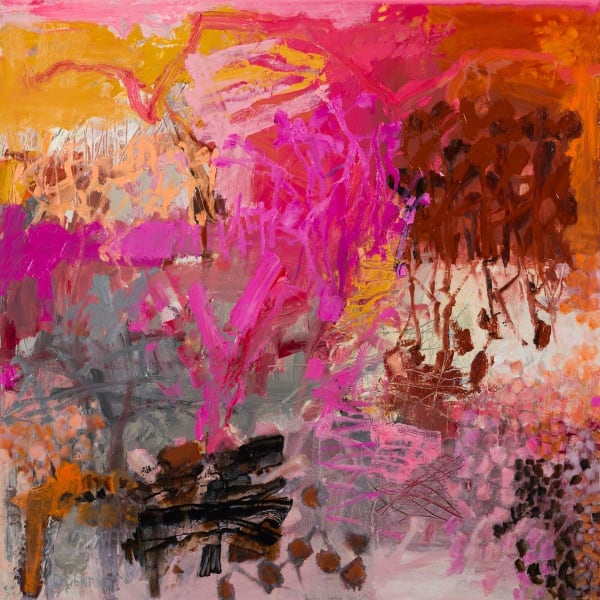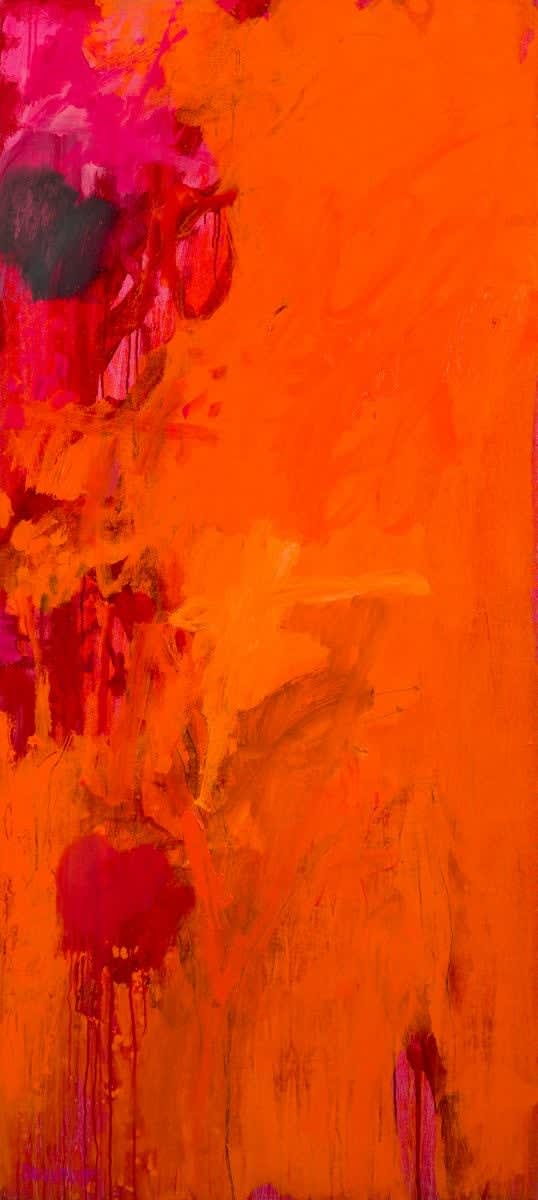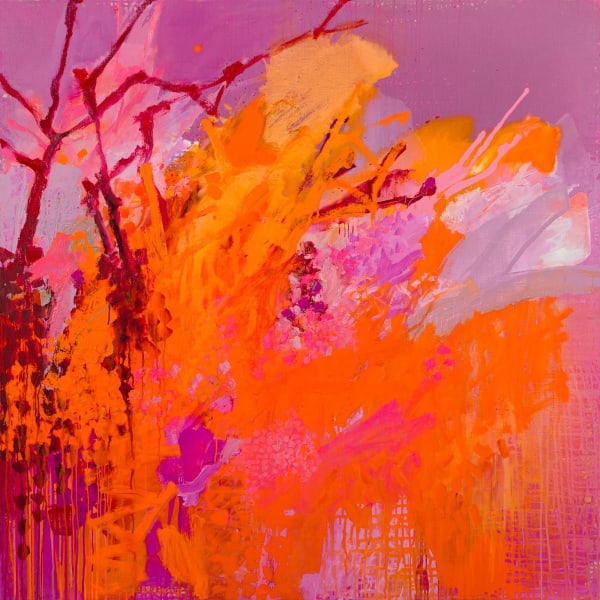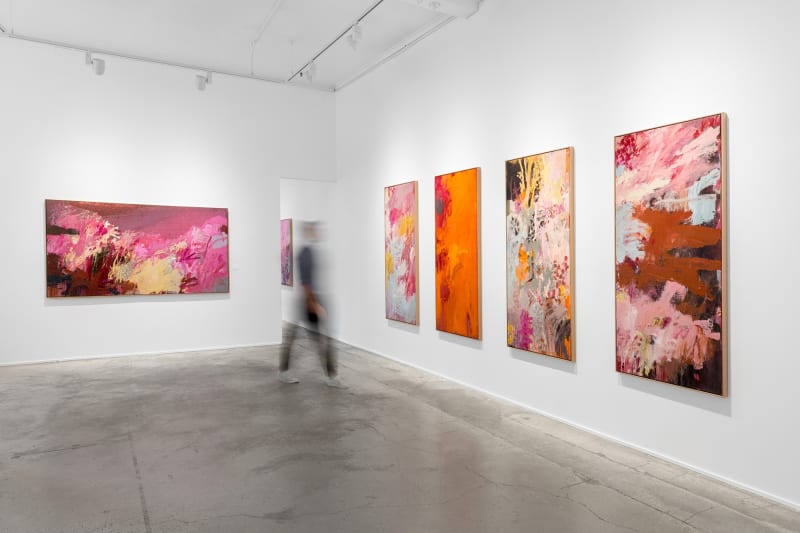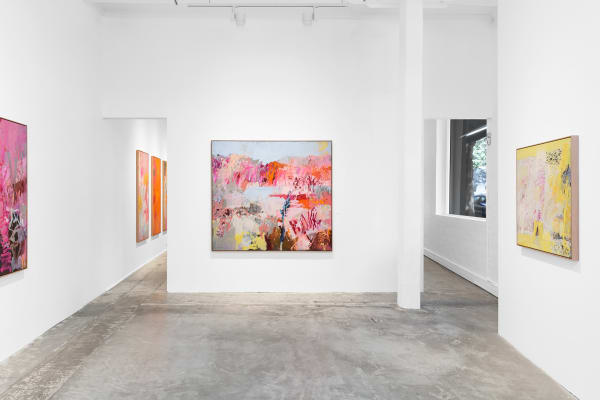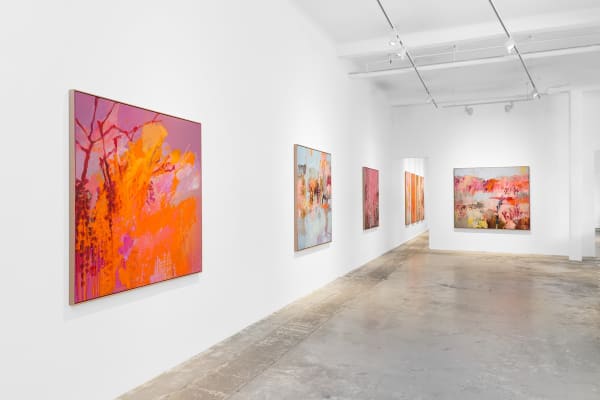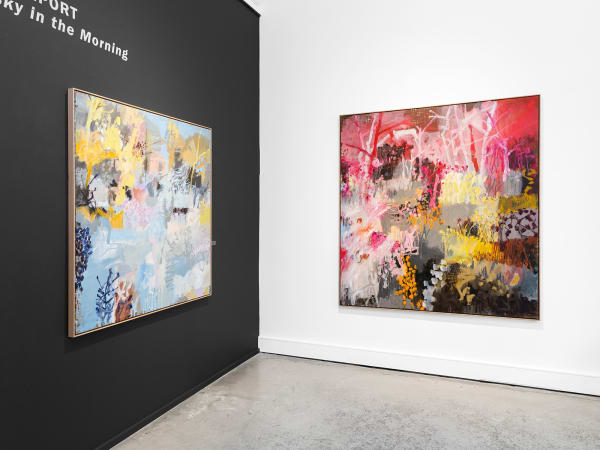Jo Davenport: Red Sky in the Morning
-
 Jo DavenportAutumn, 2019oil on Belgian linen183 x 82 cm
Jo DavenportAutumn, 2019oil on Belgian linen183 x 82 cm -
 Jo DavenportBagnell's Lagoon, 2019oil on board90 x 90 cm
Jo DavenportBagnell's Lagoon, 2019oil on board90 x 90 cm -
 Jo DavenportBeneath the Surface – Regeneration, 2019oil on Belgian linen122 x 122 cm
Jo DavenportBeneath the Surface – Regeneration, 2019oil on Belgian linen122 x 122 cm -
 Jo DavenportEventide, 2017oil on Belgian linen153 x 153 cm
Jo DavenportEventide, 2017oil on Belgian linen153 x 153 cm -
 Jo DavenportFirst Light From the Ridge, 2019oil on Belgian linen127 x 230 cm
Jo DavenportFirst Light From the Ridge, 2019oil on Belgian linen127 x 230 cm -
 Jo DavenportHarvest Moon, 2019oil on Belgian linen122 x 122 cm
Jo DavenportHarvest Moon, 2019oil on Belgian linen122 x 122 cm -
 Jo DavenportOther Side of the River, 2019oil on Belgian linen153 x 153 cm
Jo DavenportOther Side of the River, 2019oil on Belgian linen153 x 153 cm -
 Jo DavenportRed Sky in the Morning III, 2019oil on Belgian linen183 x 168 cm
Jo DavenportRed Sky in the Morning III, 2019oil on Belgian linen183 x 168 cm -
 Jo DavenportRiver Bend, 2019oil on Belgian linen140 x 140 cm
Jo DavenportRiver Bend, 2019oil on Belgian linen140 x 140 cm -
 Jo DavenportSplitters Creek, 2018oil on board55 x 55 cm, 57 x 57 cm (framed)
Jo DavenportSplitters Creek, 2018oil on board55 x 55 cm, 57 x 57 cm (framed) -
 Jo DavenportSpring, 2019oil on Belgian linen183 x 82 cm
Jo DavenportSpring, 2019oil on Belgian linen183 x 82 cm -
 Jo DavenportSummer, 2019oil on Belgian linen183 x 82 cm
Jo DavenportSummer, 2019oil on Belgian linen183 x 82 cm -
 Jo DavenportThe Evening Star, 2019oil on Belgian linen140 x 140 cm
Jo DavenportThe Evening Star, 2019oil on Belgian linen140 x 140 cm -
 Jo DavenportThe Kissing Gate, 2019oil on board90 x 90 cm
Jo DavenportThe Kissing Gate, 2019oil on board90 x 90 cm -
 Jo DavenportThe Shallows, 2019oil on Belgian linen168 x 183 cm
Jo DavenportThe Shallows, 2019oil on Belgian linen168 x 183 cm -
 Jo DavenportTread Lightly, 2019oil on Belgian linen140 x 140 cm
Jo DavenportTread Lightly, 2019oil on Belgian linen140 x 140 cm -
 Jo DavenportWinter, 2019oil on Belgian linen183 x 82 cm
Jo DavenportWinter, 2019oil on Belgian linen183 x 82 cm
The spirited paintings of Jo Davenport drift effortlessly between rupture and unity. Remembered, real and imagined landscapes converge on the canvas, forming a visual vernacular that silences the constructs of time and space. The artist’s visceral layering of oil, coupled with processes of stripping back and erasure, visualises place as an embodiment of both presence and absence. This tectonic approach moves beyond appearances and summons the ‘spirit’ of a place, fusing residues from Davenport’s personal history with the realities of the present.
Davenport pivots her painting process on ‘an awareness of the surface and the energy it creates’. She compounds different surfaces in a kind of reverse excavation, consciously concealing meaning and form so that the viewer uncovers their own truths. The artist begins by loosely tipping, pouring and splashing many layers of translucent paint. ‘After some time, the painted surface starts to take on a life of its own and I respond to that’, she explains. Davenport allows the painting to ‘talk’ to her, each mark a single syllable that gradually formulates a dialogue between artist and artwork. Building up and scraping back the surface, she leaves visible traces of earlier painting; a process called pentimento – Italian for repentance. Yet Davenport’s paintings are less about repentance and more about redemption, reclaiming moments from memory, life from loss, time from transience.
As one of six artists involved in the Earth Canvas initiative this year, Davenport has been learning about regeneration farming and ruminating on the precariousness of ‘nature’ in the age of the Anthropocene. Harnessing her own experiences of the Australian landscape – specifically in the farming community of Mundarlo – the artist consciously shifts her lens away from lamenting the earth’s plight and focuses instead on the joy of nature. ‘Nature is full of life and joy and I am always looking for creative ways to respond to it in paint’, she says. The trope of regeneration pervades this series as Davenport considers the importance of living sustainably and nurturing the earth; ‘a desire to stand back from mother nature and empower her’. Instead of dwelling on grand Romantic narratives, the landscapes form quieter, more maternal contemplations of the fragility and intimacy of the landscape.
Across her oeuvre, Davenport has engaged with abstraction as a mode of rupture – a severance from oneself that mimics the awe and dissolution felt within natural landscapes. Shifts and fractures of light and composition foster a charged emotional space between painting and viewer. A haptic energy surges within the works, as if each quivering stroke of paint hasn’t quite settled on the surface, threatening to dislodge at any moment. And yet there is an anchoring sense of weight within the works that carries the promise of endurance – much like that of the natural landscape. Marks intersect on the canvases like abstract inscriptions, constructing a symbolic language celebrating the world around us. Davenport’s meandering linework appears cartographic, pointing us towards something significant yet equally unattainable. Sheer swathes of oil partly veneering earlier marks evoke the membranes of memory that filter perception and shape our vision of the world around us. The artist’s carefully articulated palette conjures a specific time of day and season, fossilising these moments whilst also revealing the brevity of time, of life.
Though Davenport siphons the landscape as a source of inspiration – particularly the Murray River region where she has resided for many years – her works are also about painting itself. They are self-reflexive meditations on the physicality of paint and the process of painting. ‘Maybe my work is all about paint than anything else’, she contemplates. In this way, they are at once deeply personal and resoundingly universal. The artist reflects, ‘To me, painting is like a tune; something you recognise but maybe you don’t always remember the words. Maybe you make up the words, and maybe another person would sing different words to the same tune … You can only bring to a painting what you have to give. We all have had different life experiences.’
Elli Walsh

